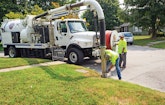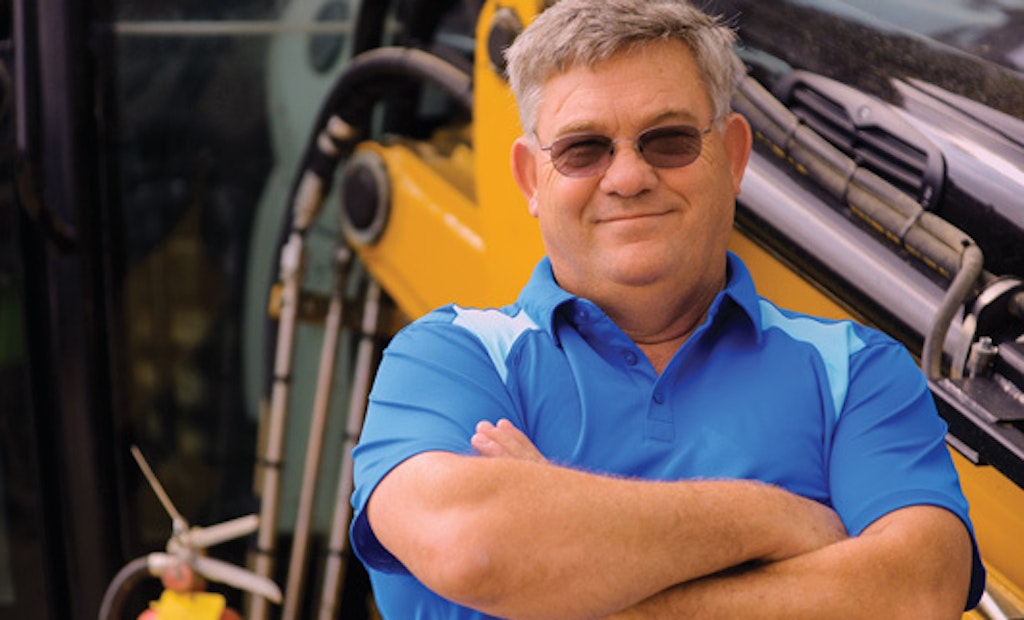Interested in Inspection?
Get Inspection articles, news and videos right in your inbox! Sign up now.
Inspection + Get AlertsWhen Henderson, Ky., entered a consent decree with the U.S. EPA in 2007, the water utility was already well on its way toward meeting the conditions it set forth. Much of the combined sewer system has since been separated, and the utility is making great strides in eliminating overflows.
“We’d actually made some pretty good progress between ’95 and 2007 when we went under the consent decree,” says Rodney Michael, director of utility operations for Henderson Water Utility. “We had accomplished several of our projects already and we basically had a plan.”
Henderson was wrapping up the final phase of the three-phase Center and Julia Separation Project when the consent decree was put in place, and the EPA allowed the utility to use that project as its early action plan. The project entailed the separation of combined sewers in a 254-acre area on the east side of town. Houses in the area flooded after even minor rainfall events, so the utility put in new stormwater lines and diverted all stormwater to a new 15-million-gallon CSO basin.
“Basically, it’s a primary treatment basin that gets settleables and floatables before it overflows and goes into the creek,” Michael says.
Historical perspective
Henderson is a community of about 28,000 people. The water utility serves the entire city as well as some outlying industrial areas, and the combined sewer system was built between 1880 and 1960.
The combined system has been the focus of an intense capital improvement program that’s been going on since well before the consent decree was signed. To date, the utility has spent $43 million on projects outlined in its long-term control plan.
One of those projects, the Downtown Area Separation Project, covered a 20-square-block area and came in at $13.8 million when the final phase was completed in 2012. The cost, however, was well worth it, according to Michael.
“On that project there were three CSO points on the Ohio River that would overflow quite a bit, and since we’ve done that project, one of those hasn’t overflowed at all,” Michael says. “The other two have been reduced probably 90 percent or better on the overflows. That was a pretty successful project.”
Most of the pipes in the project area were clay tile lines installed in 1885. They were in poor condition, and as little as a tenth of an inch of rain could create overflow situations. The system also created constant odor problems, which was an issue for local businesses, Michael says.
The project was really a complete overhaul of the downtown area. Both sewer and water lines were replaced, and roof drains that emptied into the sewer lines were reconfigured. After making about a dozen spot repairs, the old sewer lines underwent an Insituform process and were converted into stormwater lines.
“We believe the converted lines actually convey more stormwater than they did before,” says John Baker, P.E., projects and compliance manager for the utility. “With the Insituform we have a lower coefficient of friction so the water flows through it better than it did before when it was just clay tile.”
It was also a huge cost savings. Many of the old sewer lines were 16 to 21 feet deep, and replacing them at that depth would have added significant costs. By rehabbing those lines and converting them to the storm system, the utility was able to install new sewer lines at only 6 to 8 feet.
The physical construction was only part of the project. Since this was a long project encompassing much of the downtown, communication with local businesses was critical. Not all businesses were affected, but those that were dealt with construction for two to three months.
Michael says the local business owners dealt with the disruption very fairly. The city held weekly meetings involving the office staff, engineer, contractors and business owners.
“We had some pretty good meetings every week and offered a chance for people to come in and voice their concerns,” Michael says. “We would go over what we were going to do the next week, and it really worked out very, very well.
“We worked really closely with our local newspaper. They published a colored map every week showing where we would be working every week or two, kept it updated with a new map every week and we staged the project so that we stayed away from the more central downtown business district during the Christmas shopping season so it was less interference.”
Open communication was a big part of the project’s success and resolved most issues, Michael says. When the project moved to a new block, the downtown project representative would talk to the people affected, explain what was going on and listen to their concerns.
“Another thing that helped a lot was we had tremendous buy-in from the businesses themselves,” says Baker. “They wanted nothing more to get rid of their odor problems and do this project even though it would disrupt their business for a time. They were all in favor of us doing it.”
The next phase
With the downtown project complete, the utility moved on to the second phase of the Canoe Creek Project. Phase I involved running 7 miles of new sewer line to a new pump station in the center of town. Several of the pump stations that had previously dumped into the old combined system were rerouted to that location as well. That phase was completed in 2001.
Phase II included a mile of gravity line and 4 miles of force main. A total of about 3.8 mgd, which was going into the combined system, is now pumped from that station directly to the wastewater treatment plant and doesn’t infiltrate the combined sewer system.
“When it does overflow now there’s a lot less concentration, a lot more rain water and a lot less sewage that overflows,” Michael says. “The big thing with our long-term control plan was we approached it with a presumptive approach that if we got our 85 percent capture we would be good, and that’s what we based it on.”
From the Canoe Creek project, the utility started yet another capital project aimed at increasing treatment plant capacity. Bids were just opened in September.
“That’s really the last project on the list for the long-term control plan, and it consists of a new headworks, an additional clarifier and some other in-plant piping to increase that capacity,” Michael says. “So once this is accomplished, instead of pumping our 12 million gallons to the plant like we do now during a storm, we will continue to pump that 12 million gallons plus an additional 12 million gallons from our other station straight to the treatment plant.”
Most of these projects have been contracted out, but the water utility also has a construction crew comprised of six workers and a well-qualified superintendent. They take on a lot of the utility’s smaller projects and some larger projects that aren’t as resource-intensive. The crew tackled the separation of combined sewers in a 254-acre area on the $3.8 million Center and Julia Project and laid about 6 miles of smaller pipe on the Canoe Creek Project.
Beyond construction
Major capital projects have garnered a lot of attention in Henderson, but the water utility also runs a thorough cleaning and inspection program.
A two-man crew runs the utility’s CUES inspection van year-round, inspecting about 20 percent — roughly 50 miles — of the system annually. In addition, a trio of three-man dig-out crews go out and repair water, sewer and stormwater lines.
“We have the video inspection crew and we have a two-man crew that operates our Vac-Con truck, which is vacuuming and cleaning, pressure washing as well,” Michael says. “They do intakes and clean pump stations, and of course sewer lines. That’s a full-time crew and we have another two-man crew that we call our meter crew. They basically go out and take all the service calls on water meters, odor calls, people whose sewers are stopped up and so forth. Then we have another crew that basically does smoke testing. They probably smoke test about seven or eight months out of the year, and the other times we have them doing routine maintenance such as valve locations.
“We smoke test the sewer lines on a single block and if someone has a problem we’ll go to each one of the ones that are on that line and let them know what we’re doing, notify the fire department and then we smoke that whole sewer, which in turn goes to the houses. You can tell. If it has a bad gasket on it, it will show up. Or if they have a dry trap in one of the sinks it will show up.”
Paying the bills
Such an intensive capital improvement agenda comes at a price. Michael says the utility tries to keep its operational budget within about 2 to 3 percent year over year, but high project costs have driven rates up. A couple of years ago, the utility initiated a 5.85 percent annual rate increase for seven years, which will result in a cumulative rate increase of about 65 percent. Customers weren’t thrilled about it, Michael says, but they understood the projects were necessary, and there wasn’t any fluff.
The utility also did well by getting an early jump on the work, taking advantage of extremely low interest rates for the $30 million they had to borrow.
“If we did the project today instead of a couple years back it could have cost an awful lot more at today’s prices,” Baker says.
When the city entered into the consent decree in 2007, the initial estimate to satisfy its requirements was $33 million. Rising construction costs have pushed the price tag to around $43 million, but additional work has been added on.
“As we’ve gone along, we’ve found little things that if we didn’t do them now would cost us a lot more later,” Michael says. “So we tried to make sure that what we’re doing is something that is going to last another 50 years.”










